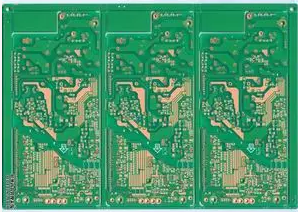The main purpose of adding nitrogen (N2) to the SMT reflow oven in the PCBA processing process is to reduce the oxidation of the soldering surface and improve the wettability of the soldering. Because nitrogen is a kind of inert gas, it is not easy to produce compounds with metals. Avoid contact between oxygen in the air and metal to produce oxidation reaction.
The principle (mechanism) that the use of nitrogen can improve the solderability of SMT is based on the fact that the surface tension of the solder in a nitrogen environment will be lower than that of exposure to the atmosphere, so that the fluidity and wettability of the solder are improved. Secondly, nitrogen reduces the original oxygen (O2) in the air and the solubility of substances that can contaminate the soldering surface, greatly reducing the oxidation of solder at high temperatures, especially for the improvement of the quality of the second side reflow soldering.
So in fact, when the printed circuit board (PCB) is reflowed on the first side (1st side), the surface treatment of the second side (2nd side) of the circuit board actually experiences the same high temperature at the same time.

The surface of the circuit board The processing will be damaged due to high temperature, especially the board with OSP surface treatment, and the oxidation is proceeding rapidly at high temperature. After adding nitrogen, the second side can be greatly reduced when the first side is reflowed. The oxidation degree of the surface treatment makes it possible to reach the second side to pass the furnace to obtain the best welding effect.
In addition, if the circuit board is left unused and exposed to the air for too long after reflow soldering on the first side before proceeding with reflow soldering on the second side, it will also easily cause oxidation problems and cause solder rejection or empty soldering problems during reflow soldering on the second side. .
At this time, the advantages of the ENIG board are revealed, because the surface treatment of ENIG is "Gold". At the current reflow temperature, the surface treatment of the second surface will hardly cause oxidation. For the sprayed tin or tin plate, due to the high temperature of the first reflow soldering, IMC will be generated before the second side is soldered in advance, which will affect the reliability of the second side reflow soldering.
Two potential problems (black nickel and phosphorus-rich layer) and preventive measures of ENIG surface treatment of PCB pads
However, it must be emphasized that "nitrogen is not a panacea for oxidation." If the surface of parts or circuit boards has been severely oxidized, nitrogen cannot bring it back to life, and nitrogen can only have a remedial effect on slight oxidation ( It is a remedy, not a solution). In fact, as long as it can ensure that the surface treatment and parts of the PCB will not be oxidized during storage and operation, adding nitrogen basically does not have much effect. At most, it can promote the flow of solder and increase the height of solder climbing. But then again, there are really few companies that can 100% ensure that the surface treatment of their PCBs and parts are not oxidized.
I talked about many of the advantages of nitrogen before, but then again, the use of nitrogen in the "Reflow oven" is not profitable and harmless. Let alone the problem of "burning money" by adding nitrogen, because nitrogen can promote the flow of solder., That's the reason for the problem, sounds weird?
Tombstone effect of resistance and capacitance because the flow of solder is too good also means that the heating effect is better. This effect is good for most parts, but it may worsen the tombstone effect of small-chip parts such as resistance and capacitance. )”, because one end of the part first melts the tin and the other end does not melt the tin, the first end of the melted tin will start to pull the part after the cohesion is strengthened. For small resistors and capacitors of 0603 and 0805 sizes, the parts can be easily erected because of their size and solder paste printing distance.
In addition, nitrogen will also increase the "wick effect" of the solder, allowing the solder paste to climb higher along the surface of the solder foot of the part. This may be a bonus for the solder foot of some parts, but it may be a shear for some connectors. Because the solder feet of the connector are usually contact points connected with other parts. These contact points may cause other problems if they are tinned, and the current connector pin spacing is very narrow, and the soldering tin may cause a short circuit when it climbs up. risks of.
Advantages of reflow soldering and nitrogen:
▪ Reduce furnace oxidation
▪ Improve welding ability
▪ Enhance solderability
▪ Reduce the void rate (void). Because the oxidation of the solder paste or solder pad is reduced, voids are naturally reduced.
Disadvantages of reflow soldering and nitrogen:
▪ Burn money
▪ Increase the probability of tombstones
▪ Enhance the wick effect
What kind of circuit boards or parts are suitable for nitrogen reflow soldering?
▪ OSP surface treatment double-sided reflow soldering board is suitable for nitrogen.
▪ It can be used when the part or circuit board does not eat tin well.
▪ After using nitrogen, pay attention to whether the tombstone defects increase, and check whether the solder feet of the connector are too high?